

你在高原:全10册
¥270.00
主人公宁伽是解放后被成反革命的宁珂的儿子,他无意间得来的一本秘籍让他更加醉心于研究和探寻自己远祖氏族(莱夷人)的历史和演变,而尤能与他分享这份喜悦的,是他的红颜知己淳于黎丽。仿佛家族的遗传,他虽已人到中年,但一直怀揣梦想,对现实不满,渴望逃离喧闹浮躁腐败的城市。为此,他离妻儿,回到自己的老家创办葡萄园、酒厂,又手了市里一家面临停办的杂志,将酿酒师、文化学人等朋友邀集一起,聚在偏远的乡村经营自己的精神家园……结果,酒厂、刊物却被查封。在残酷的现实中,宁伽及其朋友们精神上受到了严重,武早精神异常,宁伽被关了拘留所……

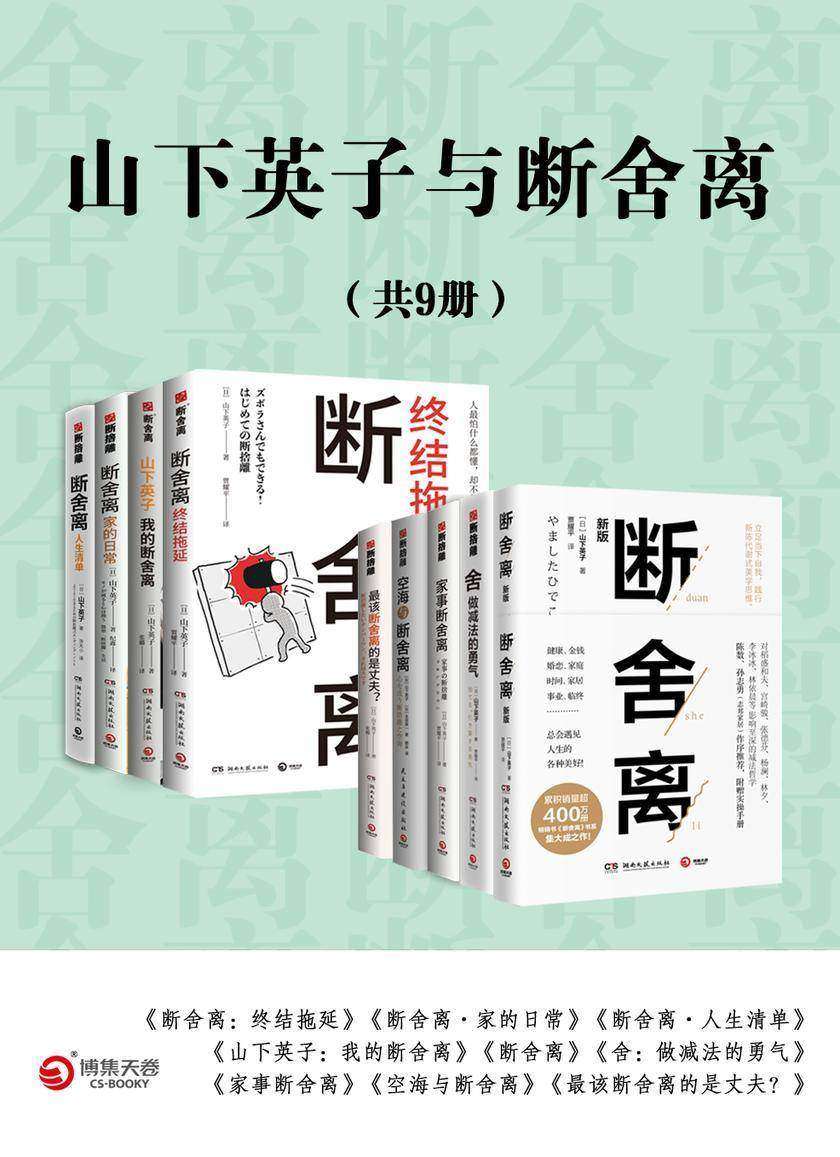
山下英子与断舍离(共9册)
¥269.99
“断舍离”畅销书系,影响稻盛和夫、陈数、张德芬、杨澜等人的减法哲学。断=断绝不需要的东西,舍=舍弃多余的废物,离=脱离对物品的执着。 《断舍离》:新版《断舍离》是“断舍离”创始人山下英子累积销量超400万册畅销书“断舍离”书系集大成之作,修订50%以上内容重新解读帮助读者重拾轻盈人生的生活哲学。理论 实践*升级,一本新书顶老版一套书,了解断舍离先读这一本。 《断舍离·家的日常》:山下英子在本书中将居所分为“食、衣、寝、住、洗、学、通”七大空间,通过展示余裕之美,让读者真切地感受到断舍离的魅力。 《断舍离·人生清单》:设想自己在未来不确定的某一天离世,要如何度过剩下的有限时日,用“人生清单”的形式倒逼现在,让自己的人生过得轻松而不留遗憾。 《舍,做减法的勇气》:一本深度解读断舍离式减法工作法的心理励志读物,是锻炼“断舍离式领导力”的书。本书将断舍离的焦点主义、三分法、留白法应用于定日程表、处理信息、提高会议效率等多种工作场景,摆脱瞎忙和低效。 《*该断舍离的是丈夫》:本书开篇启发大家设想“余生,你将与谁携手,怎样度过”,然后分别从家务分配、婚姻制度、分居出轨、家庭暴力等生活热门议题,分析亲密关系变坏的症结,剖析问题的心理根源,让读者自己通过断舍离的思维方式找到适合自己的亲密关系经营之道。 《家事断舍离》:这本书将日常整理分为“早、晚、周末”家务,结合70余幅实拍图和80余幅手绘图帮助读者认清家事的本质,通过选择和决断,将烦琐的家事变成乐在其中的生活仪式,践行“断舍离”,逐步清理自己的生活空间,把小日子越过越轻盈。 《空海与断舍离》:一本对“断舍离”思维方式进行溯源与升华的心理励志类图书。本书通过回顾“断舍离”思想的萌生和发展,展现了“断舍离”的思想内涵与日本古代高僧空海大师所创真言宗思想相似之处,并通过讲述空海大师一生的修行经历,将“断舍离”的精髓与空海大师生活方式进行类比,从流传千年的禅意哲学里找到“断舍离”能契合大众生活的思想根基。 《断舍离:终结拖延》:从拖延的三面障碍墙入手,提出“扔”是断舍离的热身运动,只有先动起来,才能产生良性循环。戒断3句纵容拖延的迷惑之言,扔掉4种垃圾,处理112种各类空间杂物,让物品和心情都变轻松。 《山下英子:我的断舍离》写于2020年全球疫情严重的时候。 人们在家里度过的时间增加了,人们面对自己的物品和生活困扰的时间也变多了,断舍离的意识更须提高了。物品过多不仅会给空间造成压力,还会给心灵造成压力。


八月长安:振华三部曲(共3册)
¥269.99
八月长安“振华中学”系列典藏!同名热门影视剧,好评如潮! 合集分别为《*好的我们:全三册》《你好,旧时光:全三册》《暗恋·橘生淮南》


爱情降级:我们时代的冷亲密(共6册)
¥269.99
套装共6册,分别为《结婚由我》《带夫修行》《爱的终结》《冷亲密》《叫醒一个装睡的爱人》《一个人生活》


中国古代短篇小说合集(套装共35册)
¥269.99
"本套书主要包括《银瓶梅》《雪月梅》《旧京琐记》《狐狸缘全传》《红楼梦考证》《平山冷燕》《东坡志林》《石头记索隐》《牡丹亭》《白兔记》《皇明英烈传》等共35册。 《银瓶梅》原名《莲子瓶演义传》,书中所述的故事发生在唐玄宗年间。兵部尚书之子裴彪依仗父亲权势,巧取豪夺,强抢民女民妇。某日,裴彪见秀士刘芳之妻颜色貌美,便起了占为己有之心。 次设计未能成功,裴彪闷闷不乐,在家无聊,去往松江一游,却被山贼古羁威捉拿至寨中。这两人一拍即合,结为兄弟。古羁威为了让裴彪赚得颜氏,又想出其他毒计。 刘芳中计被官府所抓,虽捱重刑,只不招认。一连三天,夹打至了。柳知府见夹死刘芳,不得供认,即吩咐将刘芳尸扛出荒野暂停,说他在牢狱中畏法自尽。其门生琼玉帮颜氏出逃,以避后祸。而刘芳尸身被其好友陈升盗走,幸有吕仙赐的宝瓶,救活了刘芳。 《旧京琐记》杂记同光以来清季之琐闻逸事,里巷俳谈,就记忆所及分为十卷,即卷一俗尚,卷二语言,卷三朝流,卷四宫闱,卷五仪制,卷六考试,卷七时变,卷八城厢,卷九市肆,卷十坊曲。 书中寄寓对旧日京都生活的怀恋。 《皇明英烈传》是章回体小说,又名《云合奇踪》。现代流行的评书《明英烈传》、《朱元璋演义》等曲艺作品就是据此而加工所成。本故事由明代民间流传故事改编而成,叙元朝末年顺帝失政,朱元璋率兵起义终推翻元朝统治、建立明政权。"

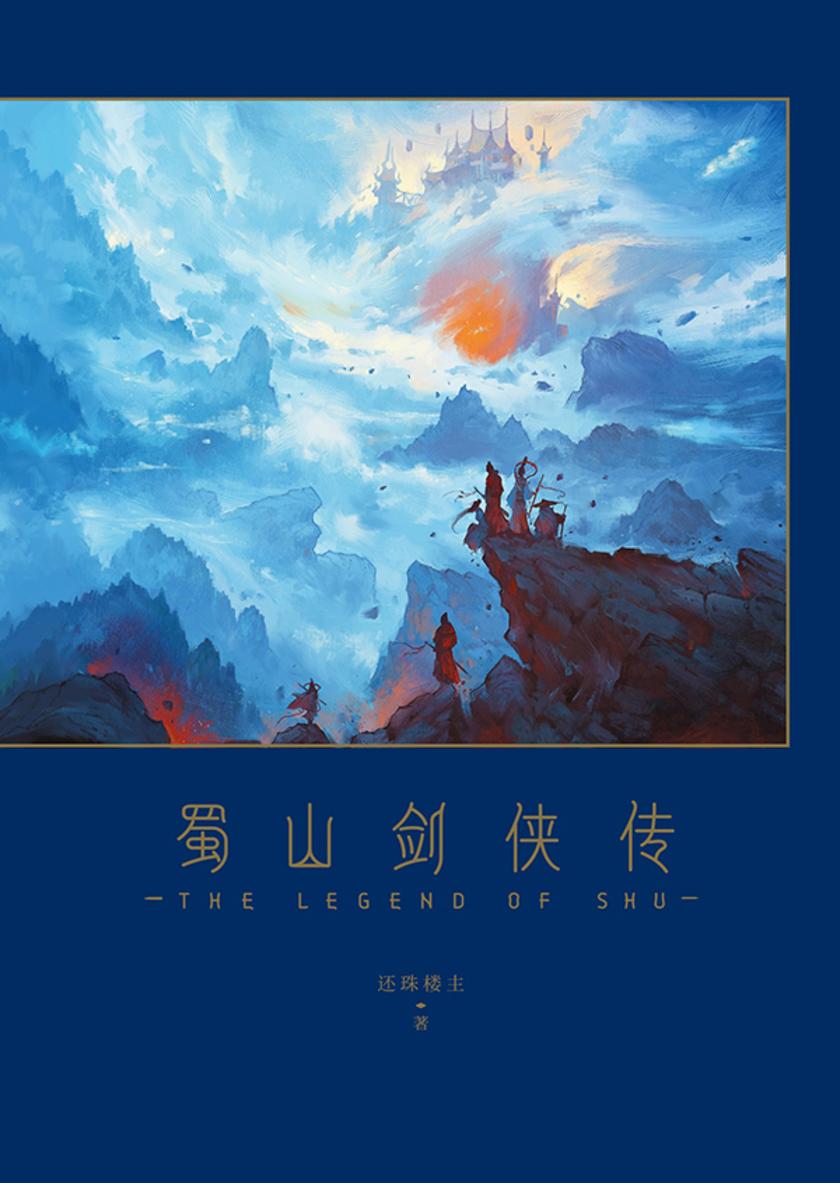
蜀山剑侠传(套装共10册)
¥269.97
本书讲述了峨眉弟子“三英二云”、“七矮”等人的拜师学艺和斩妖除魔的经历,他们在外出修行的过程中,经历无数的机缘巧合,获得了种种威力巨大的奇珍异宝,在和邪派的斗争中本领日渐高强,*终,在第三次峨眉斗剑中,正邪人物进行了*后的一次较量。


毁了你,爱上你
促销价:¥39.99|¥269.90
【大女主+复仇虐渣+对抗路CP】双商在线疯批女明星×面冷心热忠犬总裁。双强男女主*拉扯,互相救赎! 十八线女明星齐悦兮要颜值有颜值,要演技有演技,偏偏就是不火! 无所谓,成为顶流不是她的目的,她进娱乐圈不过是为了查出姐姐惨死的真相。 为了报仇,她给娱乐巨头“明珠”的总裁陆一岷当“合约女友”。 找他要资源,要支持,要工作室蒸蒸日上,唯独不要陆一岷的爱。 “爱情是虚无的,只有成功才是真实的。” 可当她命在旦夕,平日里翻云覆雨的陆总却哭成一团,抛下整个陆氏江山。 她要复仇,陆一岷为她扳倒对手; 她要拍戏,陆一岷*保驾护航; 她要事业,陆一岷给她当员工。 “齐悦兮,我这一生,都是你的不二之臣。”
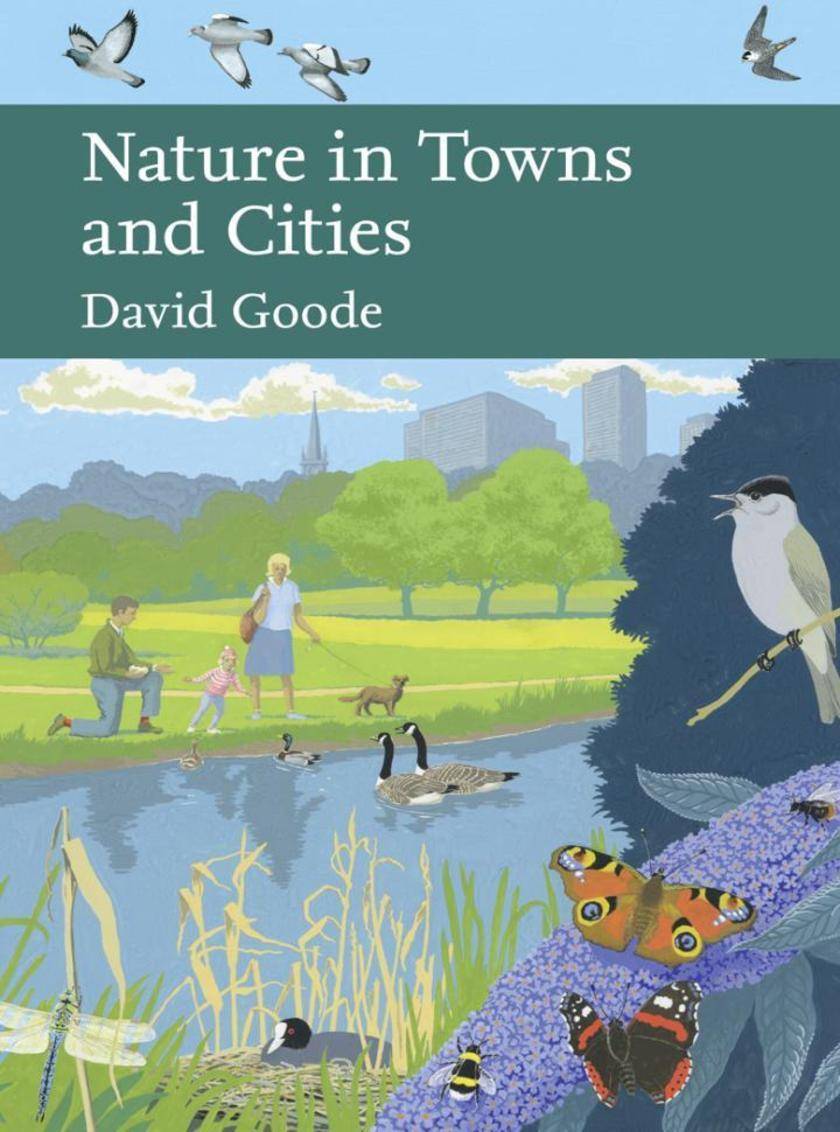
Nature in Towns and Cities (Collins New Naturalist Library, Book 127)
¥269.78
The latest in the New Naturalist series documents the parks and green spaces unique to Britain's cities – and the wildlife that has flourished in these habitats. Not since Richard Fitter’s landmark publication in 1945, ‘London’s Natural History’ – volume 3 in the New Naturalist series – has there been a comprehensive guide to urban natural history. Since then there have been major advances in the conservation of nature in our towns and cities, and there is even more to say about how animals and plants have adapted, in varying degrees, to urbanisation. But this is not merely an exploration of natural history within the urban environment – David Goode uses his knowledge of urban ecology to describe the range of habitats and species which exist within urban areas, and shows how our understanding is being applied to encourage a greater variety of nature into towns and cities. He illustrates how an ecological approach can be incorporated within planning and design to create a range of habitats from tiny oases to extensive new urban woodland and wetlands.


搭建行动闭环,让你想到又做到(套装共12册)
¥269.70
两条主线,三场关键战争,诸多珍贵照片,di一视角首度揭示戴尔成立38年来的起起落落。《进无止境》是戴尔公司董事会主席兼shou席执行官迈克尔·戴尔写作的*部个人自传。全书叙述分为两条主线:一是他从一个斗志昂扬、充满激情且富有创业精神的少年变成一家全球性企业的CEO,二是他在事关公司生死存亡的关键时刻,以难以想象的魄力和勇气将戴尔公司从虎视眈眈的敌手中保全下来,顺利推进公司私有化及带领公司强势转型的故事。 书中首度揭示了戴尔公司成立38年以来的起起落落,向大众揭示了迈克尔·戴尔从一位创业者成长为一位领·导者所经历的三场战争:一场是发起之战,一场是私有化之战,一场是转型并购之战。他在书中以di一人称视角讲述了戴尔公司从市场地位岌岌可危、负债数百亿的PC供应商,转变为现在yin领全球企业级技术服务的“行业隐形蒄军”的故事。 揭开从“创业者”到“管理者”的要领——创业独特理念。 《进无止境》不仅是一个站在十字路口的领·导者的真实写照,它还是一个生存故事,证明了任何具有技术洞察力和创业热情的人都可以创造出伟大的东西,但只有成为具有远见卓识的领·导者,才能创造伟大的事业。这本书中展示了一个真实的商业世界,可以帮助读者了解如何经营一家初创企业、了解从“创业者”转变为“管理者”的心路历程,了解戴尔公司独特的管理理念及其成功的转型故事。 首度揭秘乔布斯、比尔·盖茨、银湖投资人埃根·德班与戴尔相交往事。 书中穿插着迈克尔·戴尔与史蒂夫·乔布斯、比尔·盖茨、银湖天才投资人埃根·德班等人的交往逸事,揭秘了很多之前从未公布过的“商战内幕”,读来趣味十足,引人入胜。无论是创业者、科技创新人士、工程师、教育者,还是坚持追梦的普通人,都可以在这本书中找到灵感、信心与方向。

2666. 3 volume
¥269.69
O lectur esenial pentru toi cei interesai s-i activeze genele sntii, fericirii i longevitii!“ – Dr. Mark Hyman, autorul crii The Blood Sugar SolutionAutorii bestsellerului Supercreierul prezint o nou i ndrznea nelegere a genelor umane i a modului n care modificri simple ale stilului de via ne pot schimba sntatea general. Saltul ctre starea de bine radical" este o promisiune ce ateapt s fie mplinit.Vreme de decenii, s-a crezut c genele ne determin destinul biologic. Acum, noua genetic ne nva c genele sunt dinamice i rspund la tot ceea ce gndim, spunem i facem. Dintr-odat, au devenit aliaii notri cei mai puternici n ncercarea de nnoire personal. Putem optimiza comportamentul i expresia genelor, pentru a ajunge la o stare de sntate i mplinire la care nici nu visam cu puin timp n urm. Impactul asupra prevenirii bolilor, imunitii, mbtrnirii i bolilor cronice este fr precedent.
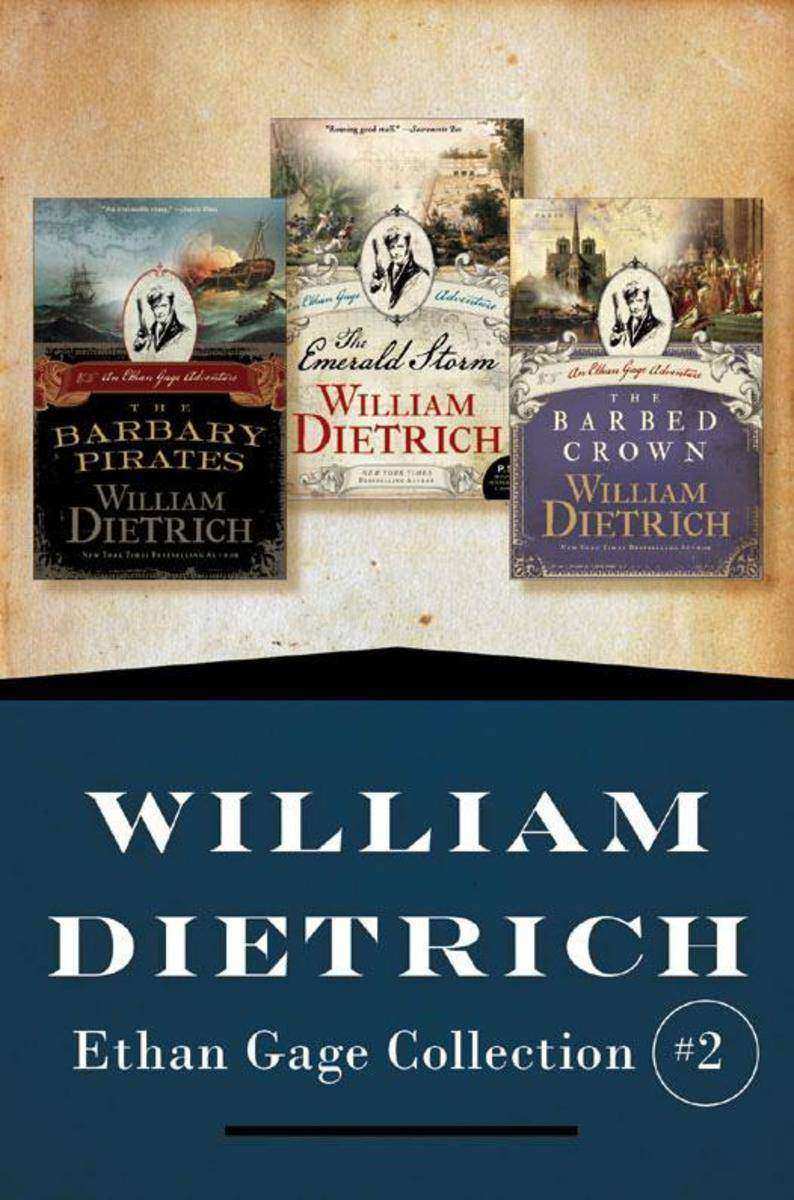
Ethan Gage Collection #2
¥269.68
From master storyteller William Dietrich come books 4-6 in his bestselling Ethan Gage adventure series: The Barbary Pirates, The Emerald Storm, and The Barbed Crown.


傅雷经典译文全集(套装共45册)
¥269.55
本套装包含《夏倍上校》《奥诺丽纳》《禁治产》《亚尔培·萨伐龙》《高老头》《欧也妮·葛朗台》《于絮尔·弥罗埃》《独身者1:都尔的本堂神甫》《独身者2:比哀兰德》《独身者3:搅水女人》《幻灭1:两个诗人》《幻灭2:内地人物在巴黎》《幻灭3:发明家的苦难》《穷亲戚1:邦斯舅舅》《穷亲戚2:贝姨》《赛查·皮罗多盛衰记》《约翰·克利斯朵夫1:黎明》《约翰·克利斯朵夫2:清晨》《约翰·克利斯朵夫3:少年》《约翰·克利斯朵夫4:反抗》《约翰·克利斯朵夫5:节场》《约翰·克利斯朵夫6:安多纳德》《约翰·克利斯朵夫7:户内》《约翰·克利斯朵夫8:女朋友们》《约翰·克利斯朵夫9:燃烧的荆棘》《约翰·克利斯朵夫10:复旦》《贝多芬传》《弥盖朗琪罗传》《托尔斯泰传》《老实人》《天真汉》《查第格》《小大人》《服尔德短篇小说选》《服尔德传》《嘉尔曼》《高龙巴》《人生五大问题》《恋爱与牺牲》《夏洛外传》《幸福之路》《文明》《英国绘画》《文学、音乐及其他译文集》《艺术的哲学》


陶工
¥269.50
本书聚焦中国传统制陶技艺,以人类学方法为基础,对全国各地老中青三代非物质文化遗产传承人行现场采访记录,将他们的背景故事、精湛技艺、工作状态和美学思想展现出来;同时结合史料,对各窑口的地理、历史、工艺特色、传承脉络以及制陶工具、工序行了总结和梳理,适合所有对中国传统手工制陶感兴趣的大众品读与收藏。

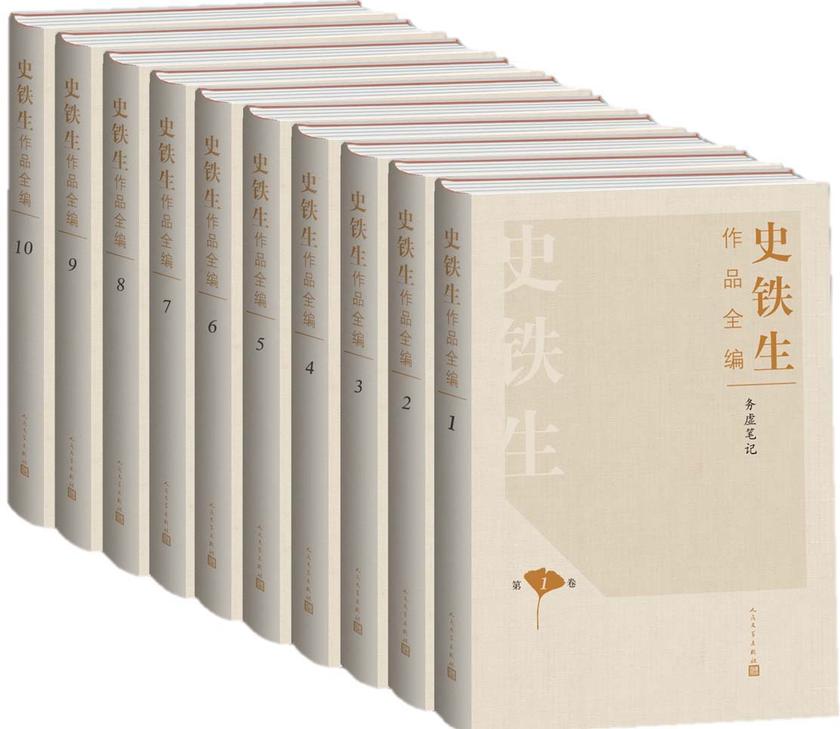
史铁生作品全编
¥269.10
《史铁生作品全编》收史铁生全部作品,共10卷。 第1卷 长篇小说《务虚笔记》; 第2卷 长篇小说《我的丁一之旅》; 第3卷 中短篇小说(1978—1984); 第4卷 中短篇小说(1985—1987); 第5卷 中短篇小说(1988—2000); 第6卷 散文随笔; 第7卷 创作谈、评论(序跋)、书信; 第8卷 《病隙碎笔》《记忆与印象》; 第9卷 《扶轮问路》《昼信基督夜信佛》; 第10卷 剧本、访谈与对话 (附《史铁生生平及创作年表》《史铁生研究资料要目》)。


蓝溪镇(共5册)(《罗小黑战记》官方前传)
¥269.10
《罗小黑战记》官方前传!蓝溪镇是老君的灵质空间,每逢乱世,老君便会四处游历,带无家可归之人到蓝溪镇躲避战乱,使他们免受流离之苦。清凝和同村的人便是得老君出手相救。来到蓝溪镇后,她认识了玄离,也拜了老君为师父。岁月如梭,长达数年的战争终于结束。清凝继续跟随老君和玄离边修行边行医,对于这个妖精与人类共存的世界,她知晓得也越来越多……


心理学大师传记(套装共6册)
¥269.00
心理学是一门相对年轻的科学,但在其短暂的历史上却不乏璀璨的明珠。这些心理学家像流星划过历史的长空,启发我们以不同的视角来看待每个人必经的人生议题。 本书系收录了在心理学史上留有浓墨重彩的心理学家,如艾里希·弗洛姆、卡伦·霍妮、西格蒙德·弗洛伊德、卡尔·荣格、阿尔弗雷德·阿德勒以及罗洛·梅等。通过回溯心理学大师的人生经历,再现经典理论的诞生过程,本书系以期构建出涵盖各个心理学流派的完整知识图谱,也让我们借助心理学的智慧,对如何度过这一生,得出我们自己的答案。 本套装包含:《我们仍然热爱生命:爱的艺术与弗洛姆的孤勇人生》《伟大的天赋,巨大的缺点:女性、神经症、自我分析与卡伦·霍妮的生活》《人心有对立的本能和欲望:精神分析与弗洛伊德的释梦人生》《命运、限制与渴求:卡尔·荣格传》《测量人类的心理:阿德勒传》《精神的奥德赛:罗洛·梅传》。


高端豪宅配色典藏
¥269.00
本书分为金色系、纯白色系、田园色系、中性色系、原木色系、混搭色系六大分类。首先分别介绍每个色系相对应的消费者和传达的感情色彩;其次对每个项目进行配色分析,并用图形概括相应的配色色值和比例,案例翔实,图片精美,便于设计师学习和参考。


宴遇Ⅳ 餐饮空间
¥269.00
《宴遇Ⅳ 餐饮空间》着重介绍各具特色的餐饮空间,按餐厅的风格类型进行分类,分为东方传奇、异域风尚和现代创想三部分。本书向您展示*的设计动态与创意成果,选取8开的大开本设计,图片精美,图纸翔实,内文编排更显大气,着重体现餐饮空间风格。 《宴遇 餐饮空间》已经成功出版三期,赢得了良好口碑与经济效益。《宴遇Ⅳ 餐饮空间》在保持一贯高水准的同时,收录更高比例国外优秀设计公司的创新作品,极具参考价值。


石材应用手册
¥269.00
本书收集了大量设计师的精彩案例,对各种石材使用进行剖析,并附有大量的图片,为读者展示各个方面的细节。全书分为石材应用知识、世界石材图库、石材应用案例、实用石材拼花及特色石材等章节,每个项目均以图文并茂的方式展示项目,包括该项目的实景图、工程图纸、项目介绍及设计师提供的亮点分析。

The Complete Helen Forrester 4-Book Memoir
¥268.30
The complete four-volume collection of classic memoir recounting a poverty-stricken childhood in 1930s Liverpool that started with Twopence To Cross the Mersey. Twopence To Cross The Mersey – When Helen Forrester’s father went bankrupt in 1930 she and her six siblings were forced into dreadful poverty in Depression-ridden Liverpool. Managing the household and caring for the younger children all fell on twelve-year-old Helen. Written without self-pity, Forrester’s memoir of these grim days is as heart-warming as it is shocking. Liverpool Miss – Life remains extremely tough for fourteen-year-old Helen. Her continuing struggles against malnutrition, dirt and, above all, the selfish demands of her parents, are deeply shocking. But Helen’s fortitude in the most harrowing of situations makes this a story of amazing courage. By The Waters Of Liverpool – though her parents are as financially irresponsible as ever, wasting money while their children go without, for Helen the future is brightening. At seventeen, she has fought won some important battles with her parents and won, then she meets Harry… Lime Street At Two – It is 1940 and Helen, now twenty, is working at a welfare centre. Her wages are pitifully low and her mother claims the whole of them for housekeeping but she is still thrilled to be gaining some independence. As WWII rages, tragedy isn’t very far away, but Helen faces it with courage and determination.
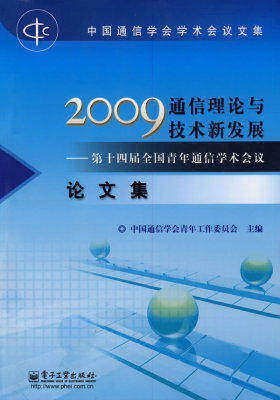
2009通信理论与技术新发展——第十四届全国青年通信学术会议论文集(试读本)
免费
本论文集收集了第十四届全国青年通信学术会议论文250篇,内容涉及通信理论与技术、计算机技术与应用、网络理论与技术、密码学与信息安全、通信业务与应用、信息化与应用等六大类,反映了通信业务与应用,企业信息化、信息化与社会发展等方面*研究展,并展望了通信领域前沿技术的发展趋势。 本书可供通信、计算机、信息技术、企业信息化等领域的科技工作者和高等院校相关专业的师生参考。




 购物车
购物车 个人中心
个人中心



